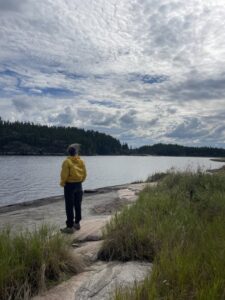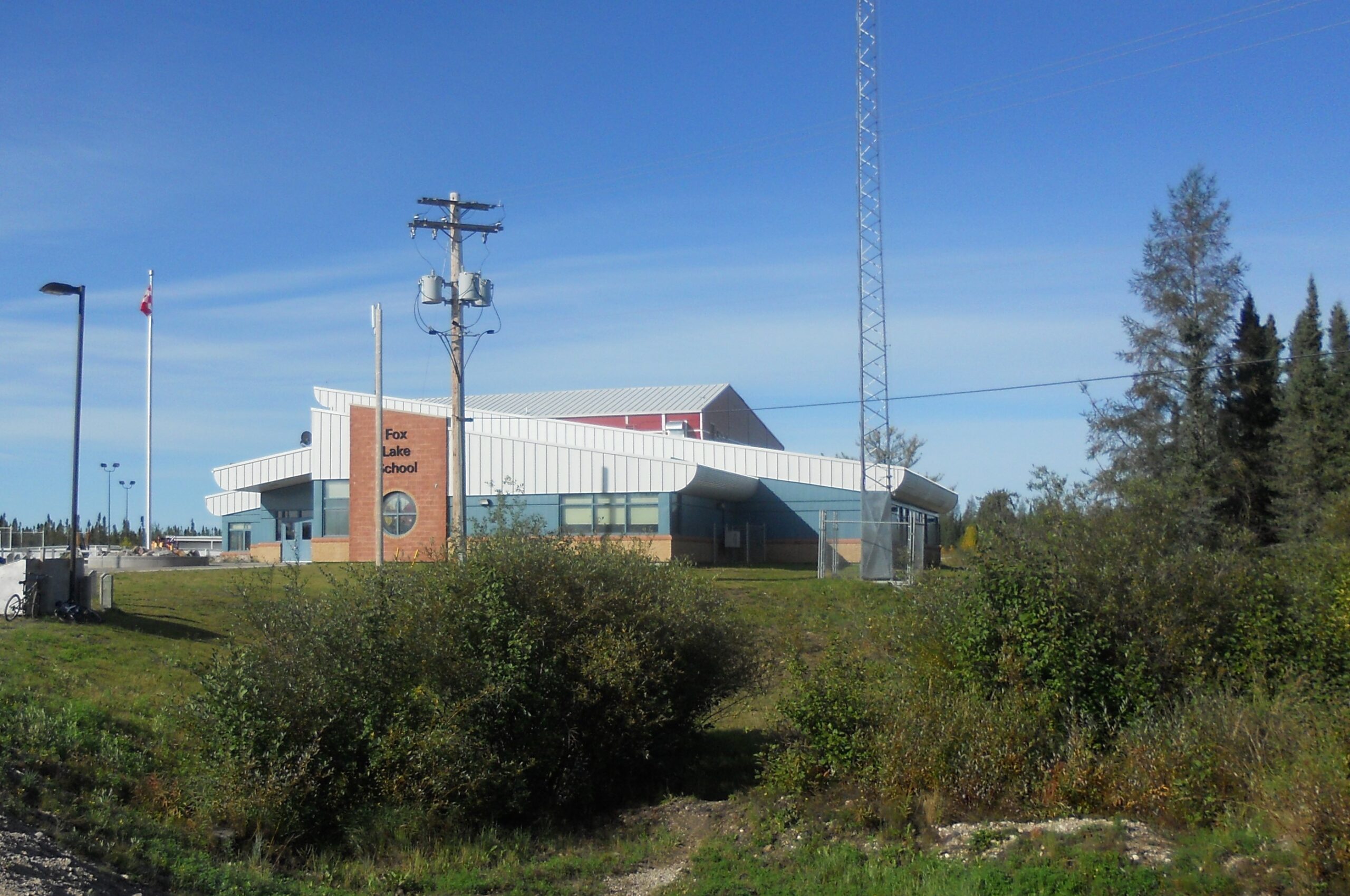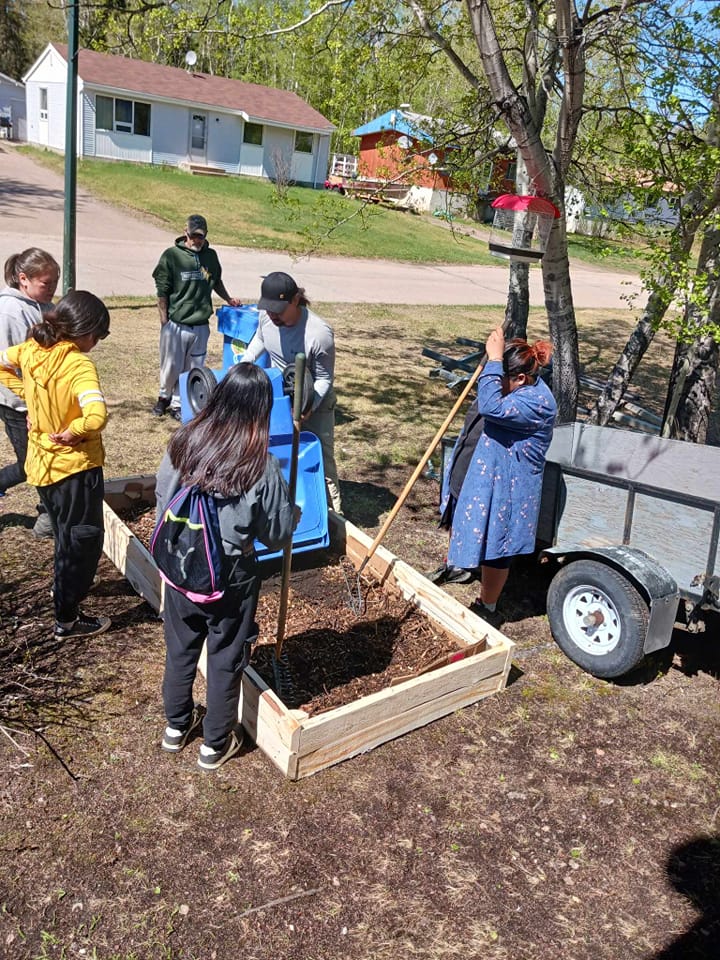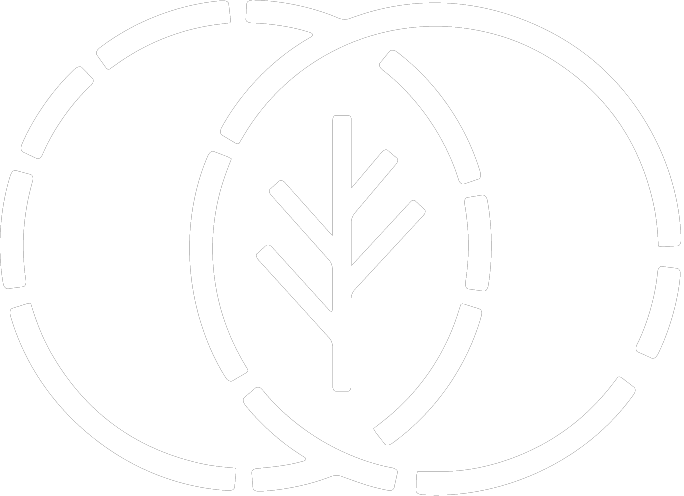Dr. Cynthia Neuoerffer accompanied us to our Norway house gathering to see first hand the work we do. She wrote this letter to share this experience with us but more importantly you.
The Grow North Gathering embodies the concept that food security is about, at least in part, living the experience of food as culture.
We often talk about the ‘five A’s of food security’ – availability, accessibility, adequacy, acceptability, and agency. While the work of Food Matters Manitoba touches on all five dimensions, two of the flagship programs of the organization – Traditional Harvesting and the Northern Harvesters program – really showcase the importance of the fourth dimension – acceptability – or access to culturally acceptable food, which is produced and obtained in ways that do not compromise people’s dignity, self-respect, or human rights.
This past August 2023, I got to experience first-hand how Food Matters is increasing access to culturally acceptable food when I participated in a three-day Grow North Gathering near Kinosao Sipi (Norway House) from August 10-12. I have been on the board of Food Matters for three years since the spring of 2020. And while I attended events in Winnipeg, this was the first time I had the chance to directly connect with the land, people, and spirit of Food Matters’ work in a personally immersive way.
Our drive north to the gathering started early on a perfect Manitoba August day – when the sky is pure blue and the sun is still hot, but the colours on the land are fast turning from the lush greens of July to the golds of fields ready for harvest and the yellows of trees starting to put on their glorious fall show. There is just a quality to the air and the way the earth feels underfoot that you know we have passed the peak of summer and the time for preparing for the dark and cold of winter has come.
I was excited for the nearly 9-hour drive north, almost all on highway 6, having never been further north than Steep Rock on Lake Manitoba. After a few hours, the fields of the south give way to the rocks and trees of the north. I drove with two of Food Matters staff – Myles King the Northern Coordinator and Morgan McCurdy, the new Northern Facilitator, both of whom are emblematic of one of the strengths of the organization – open-hearted people who understand the importance of relationships and are easy to connect with and fall into a rhythm of comfortable conversations that instantly make a long drive an adventure.
I wasn’t quite sure what to expect as we turned into the long lane that marks the entrance to the Kinosao Sipi Cultural Camp hosted by Elders Madeline and Gordie at about 7 pm. (A long lane that I was later to discover is lined on either side with an abundance of blueberry bushes). At the end of the lane the forest opens up to a large circular clearing, with a collection of buildings all made by Gordie, Madeline and their friends and family: four sleeping cabins; as many outhouses; a central octagon building housing tables for gathering and working together and space for storing food; a circular, covered outdoor kitchen with a massive firepit at its centre, its half walls surrounded on the inside by a raised platform running the circumference that held tables for food preparation, and a couple two ring gas stoves; a smoke house next door; and finally, at the far side of the clearing, a site for ceremony.
As we get out of the truck we are greeted by a buzz of excitement. Several other groups have arrived before us – most notably including Demian Laurenchuk the Executive Director of FMM and Lawrence Saunders the new Community Projects Coordinator. Demian had managed to harvest a beaver earlier in the day and he and Lawrence were already engaged in an animated discussion of how it should best be cleaned and cooked. There was a bag of freshly shot geese ready to be plucked in the Octagon and fresh sturgeon ready to be filleted and hung in the smokehouse. We unpacked our gear and gathered round the fire in the outdoor kitchen for coffee, tea, and introductions. The Grow North Gathering had begun.
Over the next three days, the group of about 25-30 of us, connected to the land and each other through the experiences of gathering, preparing, sharing, and eating traditional foods.
My morning started with blueberry picking with Donna and her mother Carol from Waboden, and some of the kids. Unlike spots in the south where the berry patches can be sparce – we could sit in one spot surrounded by bushes weighed down by their bounty and just carefully pick handfuls of ripe berries without having to move. As four-year old Lawrence Jr. reminded us, already learning the wisdom of the land, ‘don’t pick the unripe pink ones and don’t take more than you need’. The only downside of sitting in a berry patch is to remember to look up every few minutes for bears – as attracted to the heady scent of the berries as we were. At one point a brown bear wanders out of the woods to join us in the patch. Fortunately, the sharp crack of a gun shot in the air is enough to ask them to move on to another spot, which they thankfully heed. I wanted to just pick enough berries to make a pie or two at home. I helped add to Donna’s bucket – she will prepare jams and preserves to share with Elders. It felt good to know the work of my morning would contribute a small amount back to her community.
As the bear sauntered back into the woods, its visit piqued my interest in the bear motif on Donna’s beautiful ribbon skirt. As someone who grew up sewing clothes, I was interested to learn more about her skirt – made of a deep purple fabric block-printed with bears, edged with rows of blue and purple ribbons, with bear appliques. Donna shared with me that her family is from the Bear Clan and the bears represent her sons and grandchildren. That the skirt traditionally touches the ground to connect women to the Earth. The image of women connected and giving and receiving energy and sustenance to and from the Earth stays with me.
After berry picking, we gathered in the outdoor kitchen to learn how to make Bannock. A first for many of the children and youth, they got to learn the art of measuring by the handful and mixing in enough water to the dough by feel. I’ve helped make Bannock before, but Carol shared with me the art of how to perfectly deep fry them crisp and brown, but not overdone. Warm and rolled in cinnamon sugar with a hot cup of coffee is a taste of the divine.
In the afternoon Wilfred and Jeff from Cross Lake gave us a demonstration on the traditional methods for bending snowshoe frames and the intricate way to weave the foot webbing. A process that takes 2 people, one to weave and one to manage the twine and help hold the frame as each knot is pulled tight. A friendly competition of sorts quickly emerged, Gordie having always wanted to learn the webbing skill, supported by Brian as his apprentice ‘rope handler’ – both trying to ensure they could keep up the pace and quality of the seasoned expert. It was fascinating to watch as the pattens emerged and to try to guess what the next step was in the weaving process.
Dinner that night, cooked on and shared around the big fire, was the smoked sturgeon Lawrence had caught. Blackened to perfection, each mouthful melted in your mouth. So. Much. Goodness. The taste of the fish was equaled by the stories shared as we ate – about fish caught, lost, and released back to the water. Food shared with stories makes for delicious meals.
On the second day we headed out to a boat launch where 4 motorboats waited to take us out on the river to see the ancient petroglyphs and gather traditional medicine. Once again, Donna and her mom Carol shared their knowledge of plant medicine – their practiced eyes able to scan a shoreline and spot the shallow coves that were home to the plants we sought. While the medicine is certainly in the plants we harvested – weegas and xxx – the medicine, I think, is also in the shared experience of gathering. Of the group of about a dozen of us working together, those with the deepest knowledge wading into the shallows; Donna, Carol and Madeline’s expert hands knowing just where to reach into the water to find a root and how to pull with just the right amount of force to extract it from the sticky mud. The muddy roots passed to others of us spread out along on the shore of the river for cleaning. As a novice, that was my job; to carefully perch on the rocks on the shore, pull all the clumps of root follicles off the main root stalk, rinse it clean of clumps of mud, toss it in the growing pile in the sun, ready to be bagged and taken and hung to completely dry for processing. There was a collective rhythm to the harvesting that I felt emerge – a feeling of being a part of something far bigger and far older than myself – matching the steady rhythm of the water lapping on the shore. A rhythm of hands diving into water, pulling roots, tossing them onto the rocks, other hands, picking up roots, scrubbing them clean, tossing them into a growing pile in the sun. All of this accompanied by steady, good-natured banter among the group, laughter, teasing, sharing stories of past experiences of gathering medicine.
Our first and third day together ended with a sweat lodge ceremony – a fitting way to end days that had focused on gathering from the land and sharing stories of food and medicine – the gathering of the spirit in the lodge. These were only my second and third sweat lodge ceremony experiences. I entered the lodge with an open heart and a beginner’s mind – grateful to be welcomed and for Gordie’s sharing of the wisdom and teachings of the tradition. In the circle of the sweat lodge, each person brings only what they carry in their heart. The intense heat and smoke of the lodge cleanse what needs to be released, the songs and the beat of the drums fill you with what you need to be given. It is a process of letting go and one emerges from the sweat both lighter in mind, body, and spirit and deeply filled. It is a different kind of nourishment, but as vital to food security as fish or berries.
As we were winding down our time together on the last day, preparations were already underway at the Camp to welcome several hundred people from across the region for a Sundance Ceremony. Three teepees had already been raised, and soon the entire camp would be filled with trucks, tents, and RVs of the Sundancers. The spirit that nourished us for three days would continue to nourish the dancers to come.
The Grow North Gathering embodies the concept that food security is about, at least in part, living the experience of food as culture. Over the three days together we got to experience how the traditional food system is embedded in the rhythm of the land and the culture of the people that grow, process, and share food together.
Over the past year, one of the focuses of Food Matters Manitoba has been to consolidate the organizations efforts around core programs like the Northern Harvesters program. My experiences at the Grow North gathering demonstrate the wisdom of this initiative and the strong foundation it lays for the organization as it moves forward in its vital work.
Respectfully submitted,
Dr. Cynthia Neudoerffer









